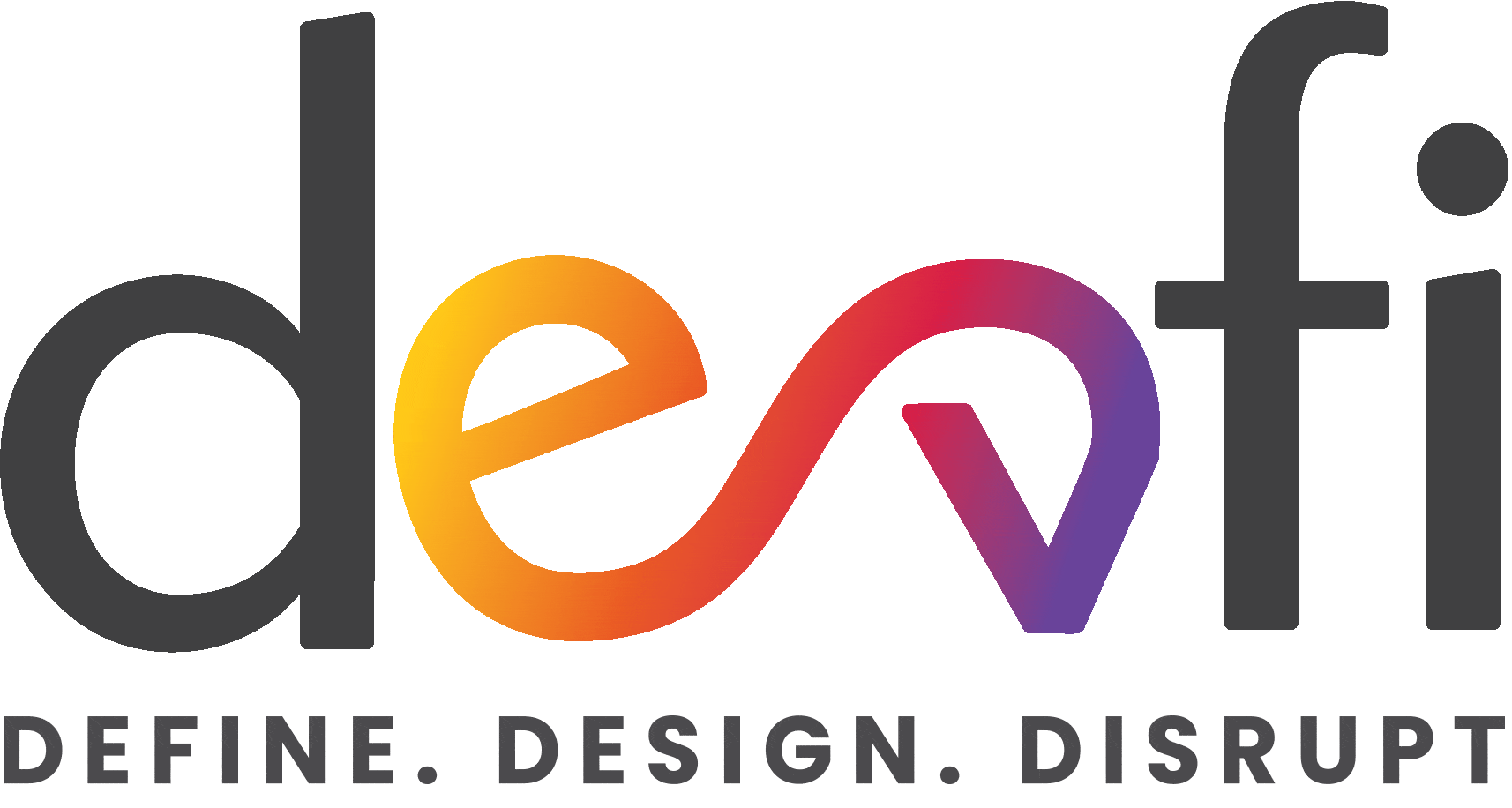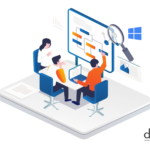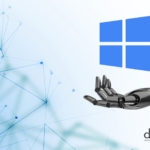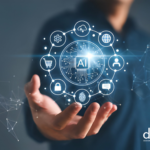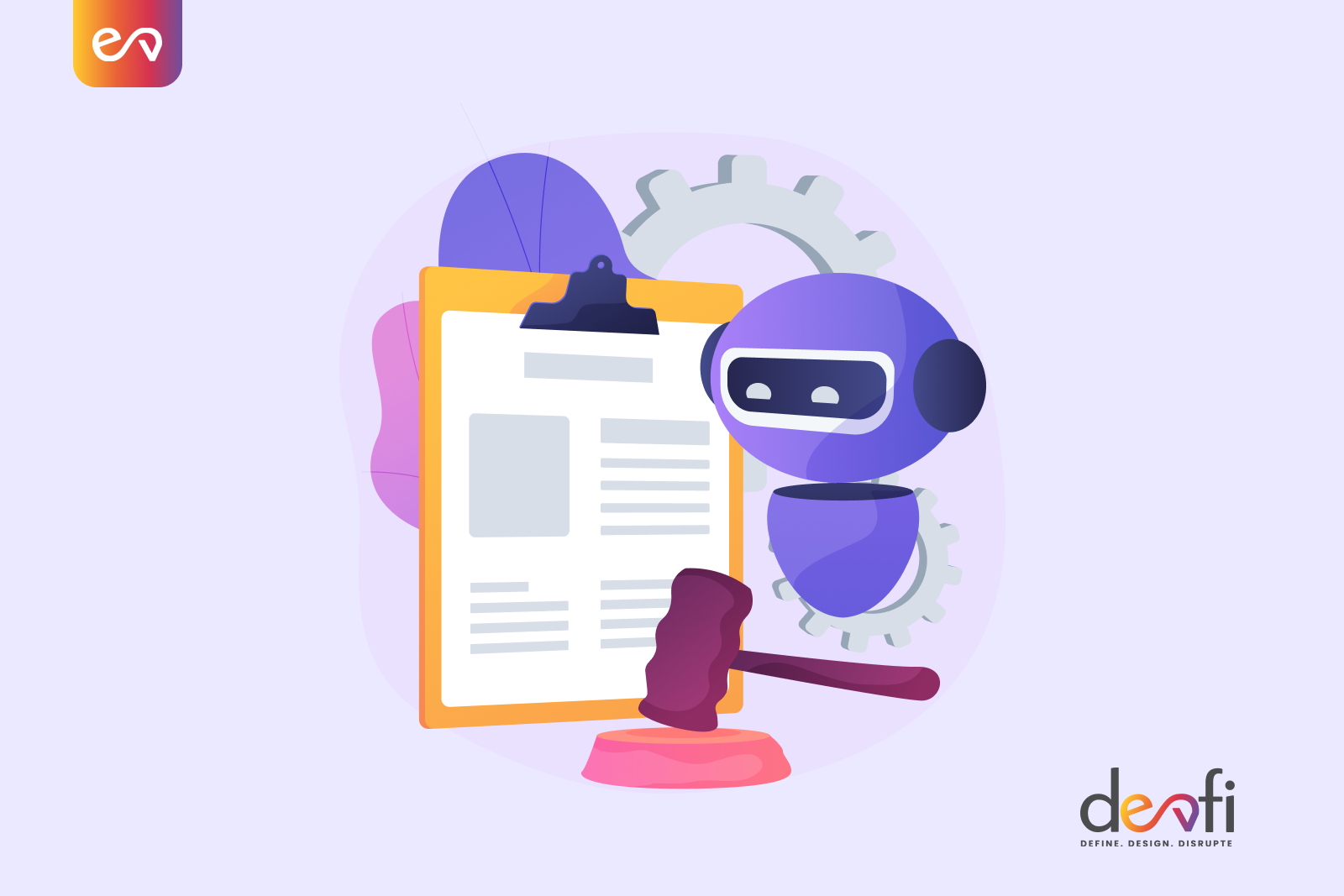Artificial intelligence (AI) is being widely used in the public sector to improve the efficiency and effectiveness of government operations in recent years. The public sector and government agencies stand to gain significant benefits from the use of AI in their operations. However, they must first ensure that the technology is secure and compliant with existing security and privacy policies.
The adoption and maturity levels of AI in the public services and government sectors vary depending on the organization’s existing infrastructure and workforce. While law enforcement, defense, and intelligence agencies are rapidly adopting AI to improve their operations and capabilities by leveraging deep neural networks and computer vision, the public sector is applying AI and machine learning (ML) to support the citizens’ various services like improving the efficiency of public transportation, providing more accurate and timely information about enrollment, and advancing the DMV capabilities.
AI Adoption – Benefits
AI is an umbrella term for technologies including deep learning, machine learning, computer vision, speech recognition, etc. When implemented properly, these techniques can provide significant benefits. Through natural language processing (NLP), analysts can find actionable intelligence from data collected from various sources and identify connections. For instance, failure rate predictions help ensure that the military equipment is ready to deploy when needed.
- Optimized, efficient, and productive processes
- Automating routine tasks
- Perform mission-critical tasks with critical capabilities
- Enhanced quality of services and offer new ones
- Advanced R & D by collaborating AI with high-performance computing (HPC) and analytics
- Better experiences by engaging stakeholders
Applying AI in Government & Public Sectors – The Process
The COVID-19 crisis has accelerated the adoption of AI in the public sector. Making processes and services more accessible has forced governments to step up their efforts. The public sector and the government were able to digitize services on a large scale and at a faster pace, manage the remote workforce, collaborate with the private sector to bridge the skill gaps, and develop innovative and enhanced solutions, all the more, used AI as a weapon in fighting against the virus.
AI systems rely on the capabilities of cognitive computing to learn and develop. They are deployed in various stages to ensure that they can perform autonomously. Before they can function properly, organizations must first think through the business case and manage the project carefully.
Plan – A strong business case is required for AI to establish its viability. It should explain how the systems will improve efficiency and effectiveness, how they will be used to improve processes, and how they will be used to collect and analyze data. KPIs should be used to evaluate the systems’ impact. The availability of data is crucial for developing cognitive systems, as it allows them to learn from the elements and concepts found in these datasets. Having large-scale data is beneficial for analytical purposes.
Develop – The development of AI systems should be focused on the organization of data, training systems, and the testing of their performance. Machine learning tools can help organizations find patterns in the data and create predictive models. It is important to provide the system with sufficient and good-quality data to support its decisions. Developers should also work with experts to improve the system by reviewing the system’s decisions and identifying root causes. When transitioning an AI system from development to deployment, it is essential to identify an acceptable performance level for the business application. This can be achieved by verifying that the AI system performs up to par with the required standards.
Deploy – AI-powered systems should be able to match their outputs with the recommendations of human experts in order to meet the expectations of their users. This method can give them more control over their own recommendations. Systems that are capable of interacting with humans must regularly be monitored and upgraded to ensure that they perform at their optimal level. Having the necessary tools and resources to monitor and analyze AI systems is important to ensure that they perform at their optimal level.
Use Cases & Applications of AI in Government & Public Sectors
The increasing recognition and support for the role that AI can play in the country’s competitive advantage will have a trickle-down effect on the adoption and maturity of the technology in various public services. AI is becoming more prevalent in the public sector environment, thus, making it crucial for the organizations to understand how their peers are already taking advantage of the technology.
Cyber security
Machine learning and AI are used in threat intelligence and detection to analyze and identify threats before they can attack.
Transportation
Sensors and object detection powered cameras are helping in identifying real-time traffic patterns, preventive maintenance, and risk assessment that help the self-driving cars navigate smoothly.
Smart cities
Cities are turning to AI and machine learning to improve their public safety by analyzing data collected by sensors and devices and combining it with historical data to identify patterns that can be used to improve the response time of first responders.
We’ve listed a few more applications of AI in government and public sectors below:
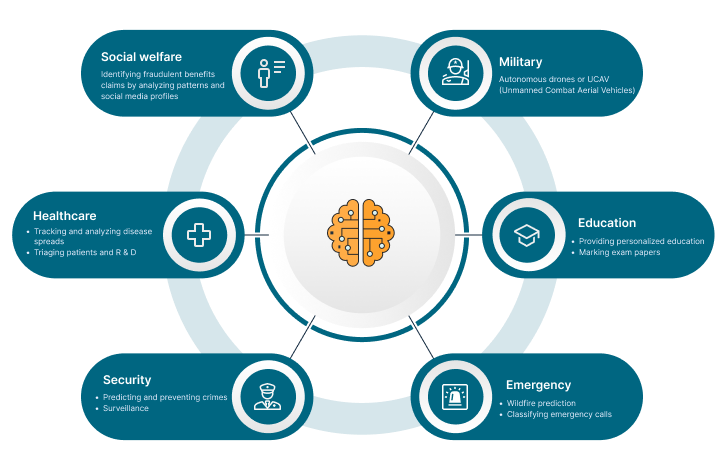
Having the right, accurate, and labeled data is critical for AI to work properly. Having the proper hardware and software to train the AI models is crucial. Devfi’s approach to AI is focused on helping government and public sector organizations develop and deploy the right system for their specific requirements. This includes identifying the necessary hardware and software, as well as managing data and ensuring that models are ready to run. For more detail, contact Devfi.
Artificial intelligence (AI) is being widely used in the public sector to improve the efficiency and effectiveness of government operations in recent years. The public sector and government agencies stand to gain significant benefits from the use of AI in their operations. However, they must first ensure that the technology is secure and compliant with existing security and privacy policies.
The adoption and maturity levels of AI in the public services and government sectors vary depending on the organization’s existing infrastructure and workforce. While law enforcement, defense, and intelligence agencies are rapidly adopting AI to improve their operations and capabilities by leveraging deep neural networks and computer vision, the public sector is applying AI and machine learning (ML) to support the citizens’ various services like improving the efficiency of public transportation, providing more accurate and timely information about enrollment, and advancing the DMV capabilities.
AI Adoption – Benefits
AI is an umbrella term for technologies including deep learning, machine learning, computer vision, speech recognition, etc. When implemented properly, these techniques can provide significant benefits. Through natural language processing (NLP), analysts can find actionable intelligence from data collected from various sources and identify connections. For instance, failure rate predictions help ensure that the military equipment is ready to deploy when needed.
- Optimized, efficient, and productive processes
- Automating routine tasks
- Perform mission-critical tasks with critical capabilities
- Enhanced quality of services and offer new ones
- Advanced R & D by collaborating AI with high-performance computing (HPC) and analytics
- Better experiences by engaging stakeholders
Applying AI in Government & Public Sectors – The Process
The COVID-19 crisis has accelerated the adoption of AI in the public sector. Making processes and services more accessible has forced governments to step up their efforts. The public sector and the government were able to digitize services on a large scale and at a faster pace, manage the remote workforce, collaborate with the private sector to bridge the skill gaps, and develop innovative and enhanced solutions, all the more, used AI as a weapon in fighting against the virus.
AI systems rely on the capabilities of cognitive computing to learn and develop. They are deployed in various stages to ensure that they can perform autonomously. Before they can function properly, organizations must first think through the business case and manage the project carefully.
Plan – A strong business case is required for AI to establish its viability. It should explain how the systems will improve efficiency and effectiveness, how they will be used to improve processes, and how they will be used to collect and analyze data. KPIs should be used to evaluate the systems’ impact. The availability of data is crucial for developing cognitive systems, as it allows them to learn from the elements and concepts found in these datasets. Having large-scale data is beneficial for analytical purposes.
Develop – The development of AI systems should be focused on the organization of data, training systems, and the testing of their performance. Machine learning tools can help organizations find patterns in the data and create predictive models. It is important to provide the system with sufficient and good-quality data to support its decisions. Developers should also work with experts to improve the system by reviewing the system’s decisions and identifying root causes. When transitioning an AI system from development to deployment, it is essential to identify an acceptable performance level for the business application. This can be achieved by verifying that the AI system performs up to par with the required standards.
Deploy – AI-powered systems should be able to match their outputs with the recommendations of human experts in order to meet the expectations of their users. This method can give them more control over their own recommendations. Systems that are capable of interacting with humans must regularly be monitored and upgraded to ensure that they perform at their optimal level. Having the necessary tools and resources to monitor and analyze AI systems is important to ensure that they perform at their optimal level.
Use Cases & Applications of AI in Government & Public Sectors
The increasing recognition and support for the role that AI can play in the country’s competitive advantage will have a trickle-down effect on the adoption and maturity of the technology in various public services. AI is becoming more prevalent in the public sector environment, thus, making it crucial for the organizations to understand how their peers are already taking advantage of the technology.
Cyber security
Machine learning and AI are used in threat intelligence and detection to analyze and identify threats before they can attack.
Transportation
Sensors and object detection powered cameras are helping in identifying real-time traffic patterns, preventive maintenance, and risk assessment that help the self-driving cars navigate smoothly.
Smart cities
Cities are turning to AI and machine learning to improve their public safety by analyzing data collected by sensors and devices and combining it with historical data to identify patterns that can be used to improve the response time of first responders.
We’ve listed a few more applications of AI in government and public sectors below:
Having the right, accurate, and labeled data is critical for AI to work properly. Having the proper hardware and software to train the AI models is crucial. Devfi’s approach to AI is focused on helping government and public sector organizations develop and deploy the right system for their specific requirements. This includes identifying the necessary hardware and software, as well as managing data and ensuring that models are ready to run. For more detail, contact Devfi.
